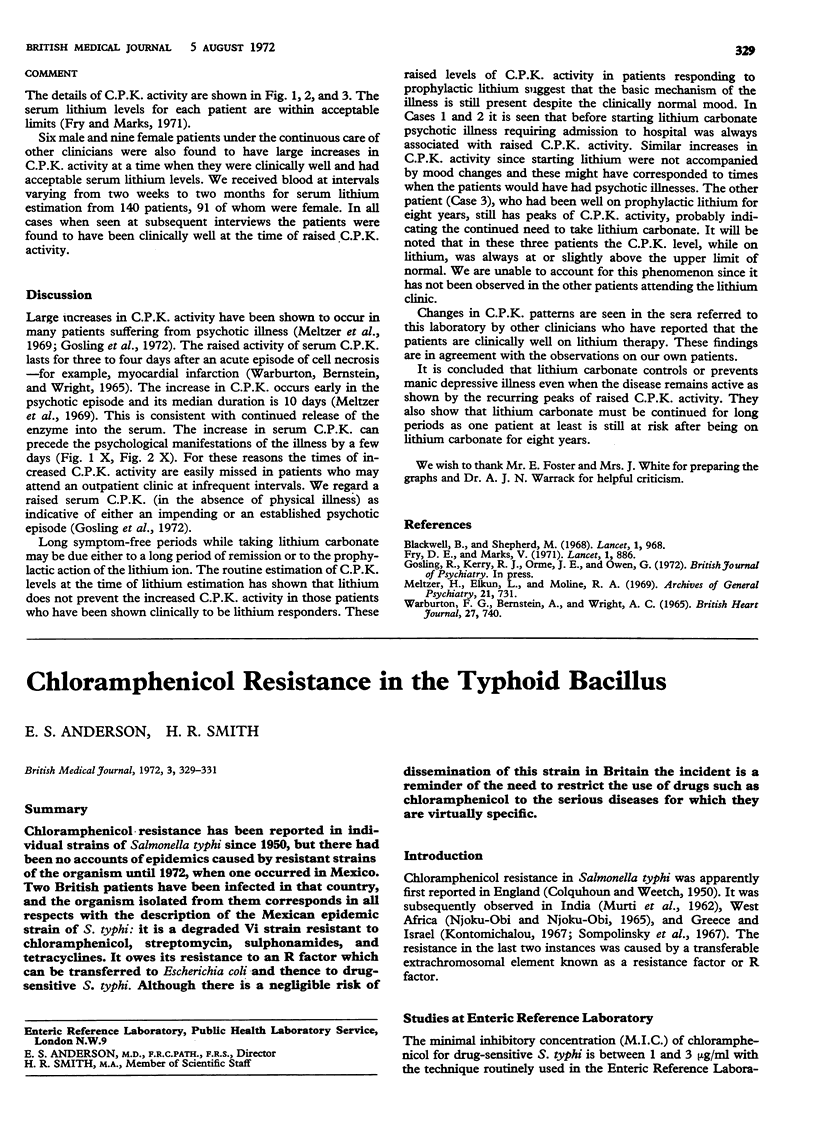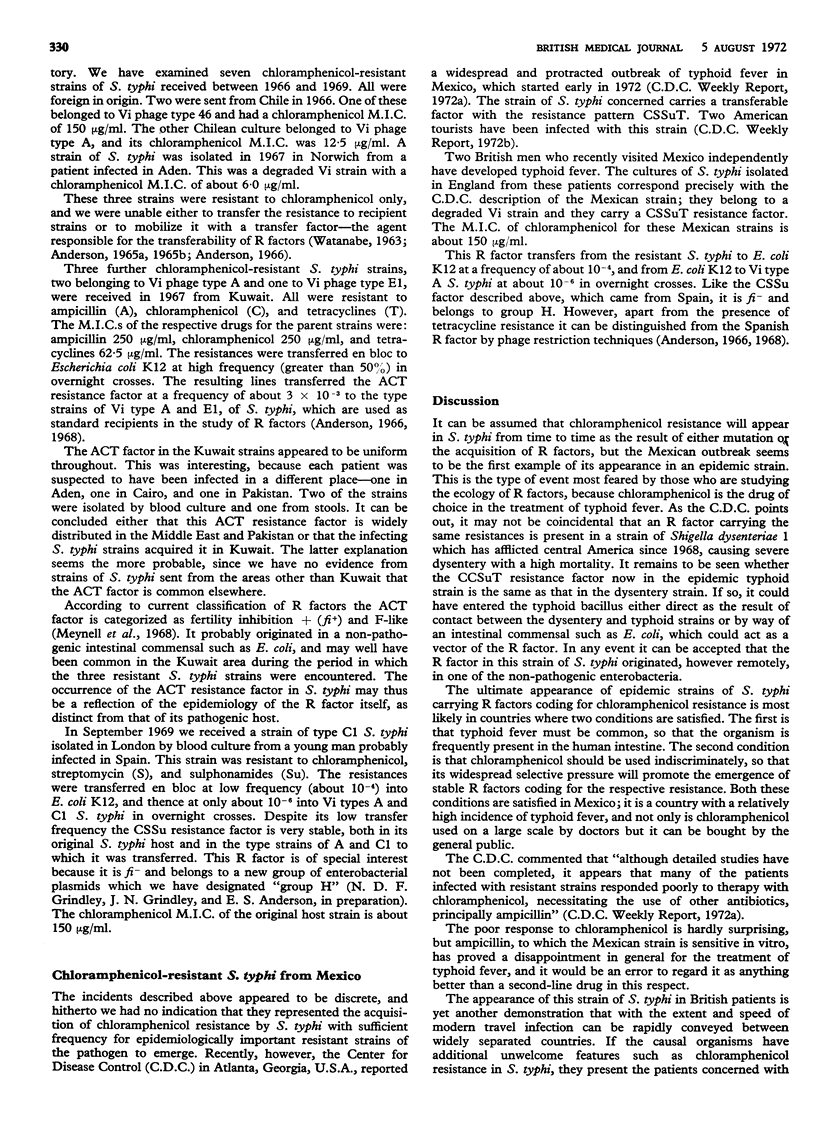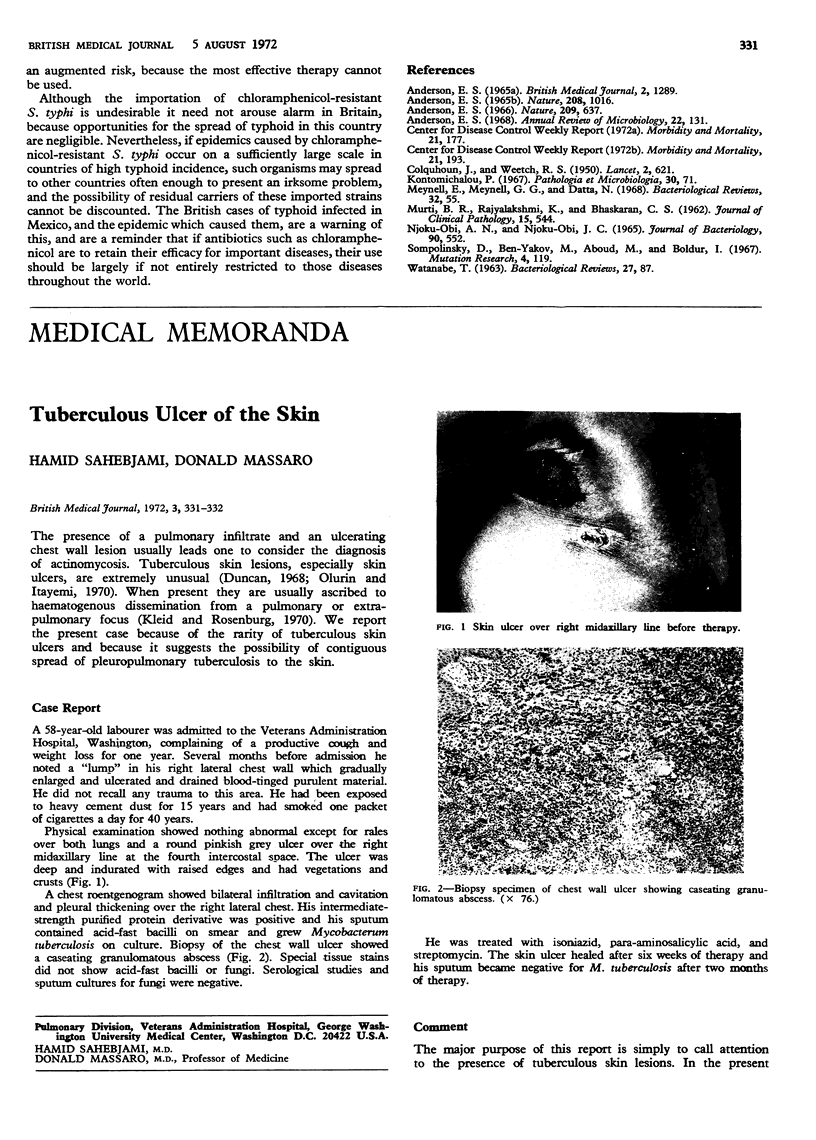Abstract
Chloramphenicol resistance has been reported in individual strains of Salmonella typhi since 1950, but there had been no accounts of epidemics caused by resistant strains of the organism until 1972, when one occurred in Mexico. Two British patients have been infected in that country, and the organism isolated from them corresponds in all respects with the description of the Mexican epidemic strain of S. typhi: it is a degraded Vi strain resistant to chloramphenicol, streptomycin, sulphonamides, and tetracyclines. It owes its resistance to an R factor which can be transferred to Escherichia coli and thence to drugsensitive S. typhi. Although there is a negligible risk of dissemination of this strain in Britain the incident is a reminder of the need to restrict the use of drugs such as chloramphenicol to the serious diseases for which they are virtually specific.
Full text
PDF


Images in this article
Selected References
These references are in PubMed. This may not be the complete list of references from this article.
- Anderson E. S. A rapid screening test for transfer factors in drug-sensitive Enterobacteriaceae. Nature. 1965 Dec 4;208(5014):1016–1017. doi: 10.1038/2081016a0. [DOI] [PubMed] [Google Scholar]
- Anderson E. S. Origin of transferable drug-resistance factors in the enterobacteriaceae. Br Med J. 1965 Nov 27;2(5473):1289–1291. doi: 10.1136/bmj.2.5473.1289. [DOI] [PMC free article] [PubMed] [Google Scholar]
- Anderson E. S. Possible importance of transfer factors in bacterial evolution. Nature. 1966 Feb 5;209(5023):637–638. doi: 10.1038/209637a0. [DOI] [PubMed] [Google Scholar]
- COLQUHOUN J., WEETCH R. S. Resistance to chloramphenicol developing during treatment of typhoid fever. Lancet. 1950 Nov 25;2(6639):621–623. doi: 10.1016/s0140-6736(50)91585-6. [DOI] [PubMed] [Google Scholar]
- Kontomichalou P. Studies on resistance transfer factors. Pathol Microbiol (Basel) 1967;30(1):71–93. doi: 10.1159/000161646. [DOI] [PubMed] [Google Scholar]
- MURTI B. R., RAJYALAKSHMI K., BHASKARAN C. S. Resistance of Salmonella typhi to chloramphenicol. I. A preliminary report. J Clin Pathol. 1962 Nov;15:544–551. doi: 10.1136/jcp.15.6.544. [DOI] [PMC free article] [PubMed] [Google Scholar]
- Meynell E., Meynell G. G., Datta N. Phylogenetic relationships of drug-resistance factors and other transmissible bacterial plasmids. Bacteriol Rev. 1968 Mar;32(1):55–83. doi: 10.1128/br.32.1.55-83.1968. [DOI] [PMC free article] [PubMed] [Google Scholar]
- NJOKU-OBI A. N., NJOKU-OBI J. C. RESISTANCE OF SALMONELLA TYPHOSA TO CHLORAMPHENICOL. J Bacteriol. 1965 Aug;90:552–553. doi: 10.1128/jb.90.2.552-553.1965. [DOI] [PMC free article] [PubMed] [Google Scholar]
- Sompolinski D., Ben-Yakov M., Aboud M., Boldur I. Transferable resistance factors with mutator effect in Salmonella typhi. Mutat Res. 1967 Mar-Apr;4(2):119–127. doi: 10.1016/0027-5107(67)90063-2. [DOI] [PubMed] [Google Scholar]
- WATANABE T. Infective heredity of multiple drug resistance in bacteria. Bacteriol Rev. 1963 Mar;27:87–115. doi: 10.1128/br.27.1.87-115.1963. [DOI] [PMC free article] [PubMed] [Google Scholar]




